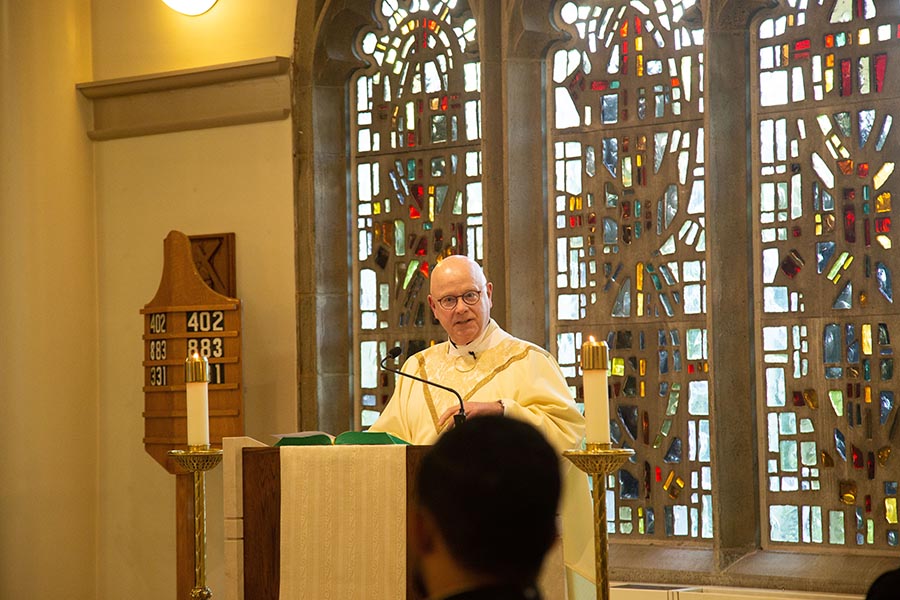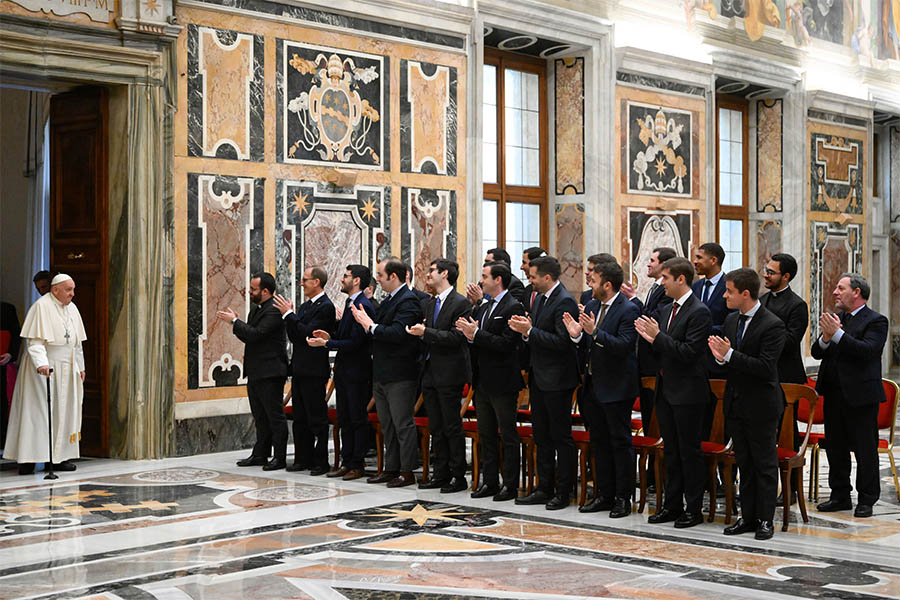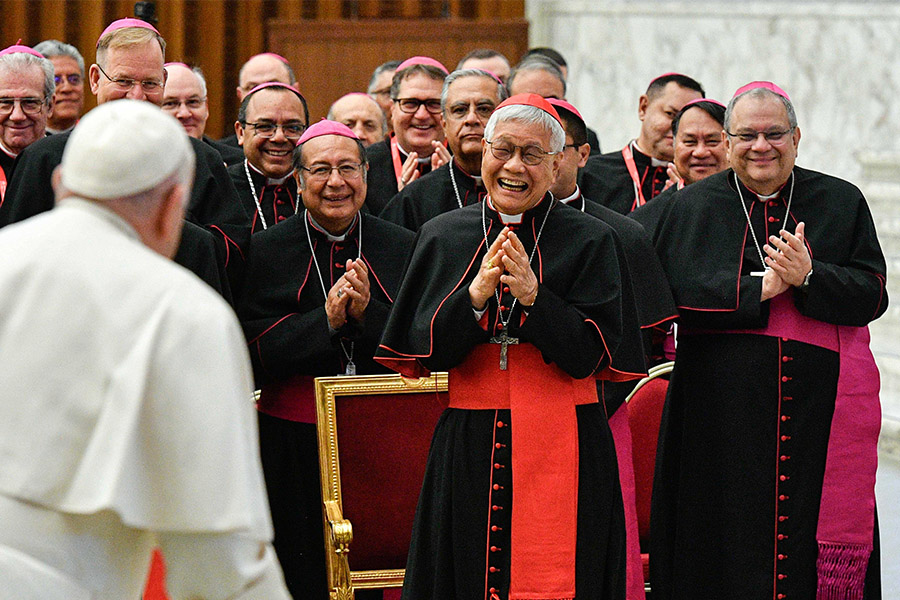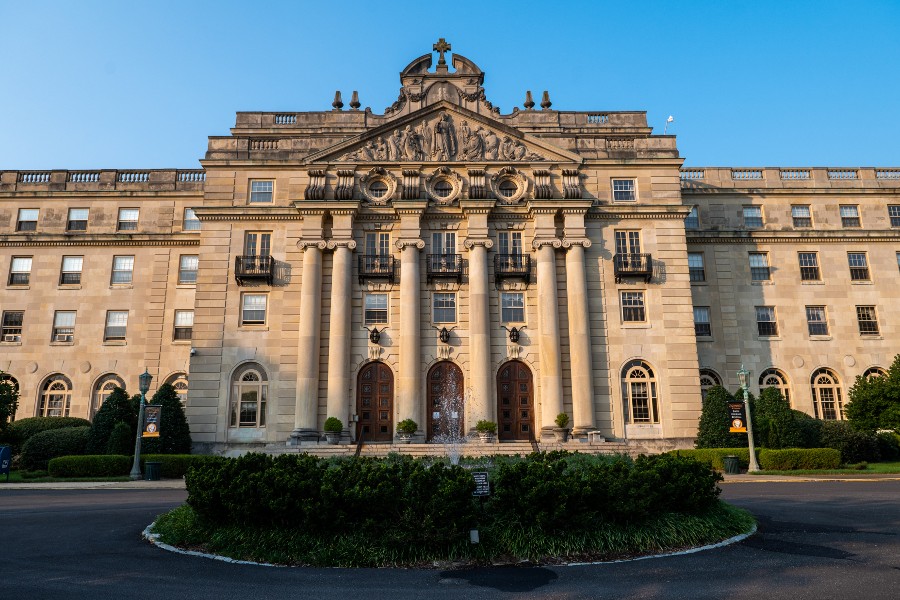The site of the first seminary in the United States will be home to a new program for those discerning a vocation to the priesthood when a regional house of formation opens at St. Mary’s on Paca Street.
The former convent on the site, which currently serves as the Spiritual Center, will be renovated to accommodate up to 16 discerners plus two Sulpician priests who will assist in their human and spiritual formation, especially in the context of becoming a priest, Sulpician Father Daniel F. Moore, provincial, told the Catholic Review.
The new regional house of propaedeutic formation – the first stage of formation and discernment toward the priesthood – will be named for Blessed Father Michael J. McGivney, founder of the Knights of Columbus and an alumnus of St. Mary’s Seminary ordained to the priesthood in 1877. It was named with the permission of Patrick E. Kelly, supreme knight of the Knights of Columbus, and has the endorsement of Baltimore Archbishop William E. Lori, the Knights’ supreme chaplain.

The archbishop is also chancellor and chairman of the board of St. Mary’s Seminary and University in Roland Park.
Father McGivney’s “final preparation for the priesthood took place at the site on Paca Street,” the archbishop said. “The preparatory year is a relatively new feature of priestly formation that will be implemented on a very historic site in the history of priestly formation in the United States. It is a return to our roots,” Archbishop Lori said.
The move comes after the U.S. Sulpician Province consulted widely on the revised Program for Priestly Formation issued by the U.S. Conference of Catholic Bishops, as it pertained to the propaedeutic year. The “Ratio Fundamentalis Institutionis Sacerdotalis, The Gift of the Priestly Vocation” (issued by the Vatican in 2016) and the PFF envision four stages of priestly formation: the propaedeutic stage, an initial time of discernment, and human and spiritual formation; the discipleship stage, currently the philosophy or collegiate period; configurative stage, the years spent studying theology; and the vocational synthesis, i.e., the pastoral stage, in which the candidate for priesthood integrates what he has learned by working in a Catholic community with his bishop and a pastor entrusted with the seminarian’s final stage of priestly formation.
According to Sulpician Father Daniel F. Moore, provincial, the “bookends” – the first and fourth stages – should take place outside a seminary setting, so placing the new discernment period at the Paca Street location ensures it is not part of the St. Mary’s Seminary and University campus in Roland Park.
“We have several years to develop and hone this (final) stage. Presumably, the first third-year theologian to enter this stage would have been a discerner who began propaedeutic formation in summer/fall of 2023,” he said.
“U.S. bishops are looking to seminaries and seminary administrators to assist in the planning and implementation of this vocational discernment initiative,” Father Moore wrote in a letter to his Sulpician confreres announcing the new effort. The Baltimore house will be one of about a half dozen across the country addressing the same need, he said. “The two bookends are new stages,” Father Moore said. The Program for Priestly Formation envisions that dioceses should have more of a role with the discerners in the early stage.
“Both the bookends are ways to have young men who are serious about their discernment approaching it in a serious way and bring them into a formative community of like people,” he said.
The program will be open to potential seminarians from several Mid-Atlantic dioceses in the contiguous Eastern region, with students from St. Mary’s Seminary; the Theological College at the Catholic University of America in Washington, D.C.; and other seminaries.
The program and housing can accommodate up to 16 men in formation, plus two Sulpician priests – a rector and an assistant – to guide the formation. The purpose of the Society of St. Sulpice is mainly the education of priests, and it established the first Catholic institution for the training of clergy in the newly formed United States at St. Mary’s on Paca Street in 1791.
The program will bring in people to give talks on catechesis and spiritual life. It is primarily not an academic experience, which is why the PPF notes that it should be located outside the seminary experience.
The program will provide those who may believe they have a call to the priesthood a chance to get to know each other, discern, develop a sense of prayer, and develop a relationship with Jesus Christ. That includes “community, catechesis, deepening of spirituality and self-
knowledge, trust, fraternity and prayer,” he said.
The Paca Street site includes a historic chapel, classroom setting, a visitors’ center, the Seton House where St. Elizabeth Ann Seton once lived, and an inside garden. “The place is built for spiritual reflection, study and community,” Father Moore said.
The convent that will house the propaedeutic program was built in 1898 and has been renovated over the years, most recently in 2009. It currently serves as the visitors’ center and historic site.
The new program will mean that the St. Mary’s Spiritual Center and Historic Site will no longer be open regularly to the public. “Since its primary purpose will be a house of discernment, we wouldn’t want it to be available for visitors during the week, but we are looking to make it available, perhaps one weekend a month, for visiting and history,” Father Moore said.
Email Christopher Gunty at editor@CatholicReview.org.
Read More Vocations
Copyright © 2023 Catholic Review Media






